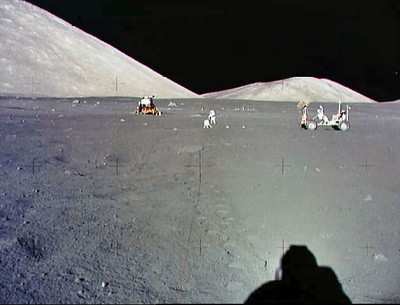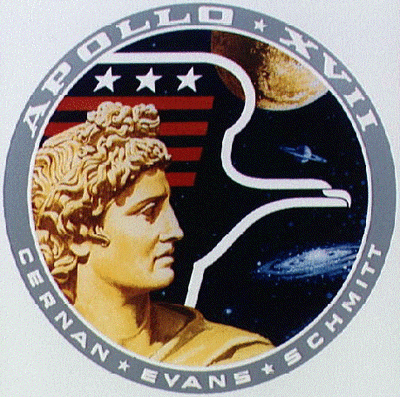Sun, Dec 12, 2010
And No One Has Returned
Where were you the better part of 40 years ago? Well... some of
us have better memories to look back upon then others. NASA has
been celebrating the 40th Anniversary of the Apollo moon landings
since last year as Apollo 11's efforts turned to a ripe old
age.

In the case of the crew of Apollo 17 just 38 years ago, today,
they were exploring the moon, the last men from Earth to do so.
Apollo 17 carried the only trained geologist to walk on the surface
of the moon, lunar module pilot Harrison Schmitt. Over the course
of scant hours, the crew of Apollo 17 covered the greatest distance
of all the crews, using the Lunar Roving Vehicle, while also coming
home with the largest treasure trove of lunar rock and soil
samples. Eugene Cernan, much to his regret, holds the unfortunate
distinction of being the last man to walk on the Moon, as NASA's
future lunar exploration plans were gutted by budget cuts
thereafter.

According to NASA resources, the lunar landing site was the
Taurus-Littrow highlands and valley area. This site was picked for
Apollo 17 as a location where rocks both older and younger than
those previously returned from other Apollo missions and from the
Luna 16 and 20 missions might be found.

The mission was the final in a series of three 'J-type' missions
planned for the Apollo program. These J-type missions can be
distinguished from previous G and H-series missions by extended
hardware capability, larger scientific payload capacity and by the
use of the battery powered Lunar Roving Vehicle (LRV).

Scientific objectives of the Apollo 17 mission included
geological surveying and sampling of materials and surface features
in a preselected area of the Taurus-Littrow region, deploying and
activating surface experiments, and conducting inflight experiments
and photographic tasks during lunar orbit and transearth coast
(TEC). These objectives included: Deployed experiments such as the
Apollo lunar surface experiment package (ALSEP) with a Heat Flow
experiment, Lunar seismic profiling (LSP), Lunar surface gravimeter
(LSG), Lunar atmospheric composition experiment (LACE) and Lunar
ejecta and meteorites (LEAM). The mission also included Lunar
Sampling and Lunar orbital experiments. Biomedical experiments
included the Biostack II Experiment and the BIOCORE
experiment.

Cernan and Schmitt spent 75 hours on the surface of the moon.
There are, at present, no concrete plans to return to earth's only
natural satellite.
More News
The Industry Continues to be Rocked By Some Questionable Operations Recent investigations and a great deal of data has resulted in ANN’s SportPlane Resource Guide’s rep>[...]
Make Sure You NEVER Miss A New Story From Aero-News Network Do you ever feel like you never see posts from a certain person or page on Facebook or Instagram? Here’s how you c>[...]
Visual Approach Slope Indicator (VASI) An airport lighting facility providing vertical visual approach slope guidance to aircraft during approach to landing by radiating a directio>[...]
Airport Marking Aids Markings used on runway and taxiway surfaces to identify a specific runway, a runway threshold, a centerline, a hold line, etc. A runway should be marked in ac>[...]
Aero Linx: The Skyhawk Association The Skyhawk Association is a non-profit organization founded by former Skyhawk Pilots which is open to anyone with an affinity for the A-4 Skyhaw>[...]
 Unfortunate... ANN/SportPlane Resource Guide Adds To Cautionary Advisories
Unfortunate... ANN/SportPlane Resource Guide Adds To Cautionary Advisories ANN FAQ: Turn On Post Notifications
ANN FAQ: Turn On Post Notifications ANN's Daily Aero-Term (04.29.24): Visual Approach Slope Indicator (VASI)
ANN's Daily Aero-Term (04.29.24): Visual Approach Slope Indicator (VASI) ANN's Daily Aero-Term (04.28.24): Airport Marking Aids
ANN's Daily Aero-Term (04.28.24): Airport Marking Aids ANN's Daily Aero-Linx (04.28.24)
ANN's Daily Aero-Linx (04.28.24)







